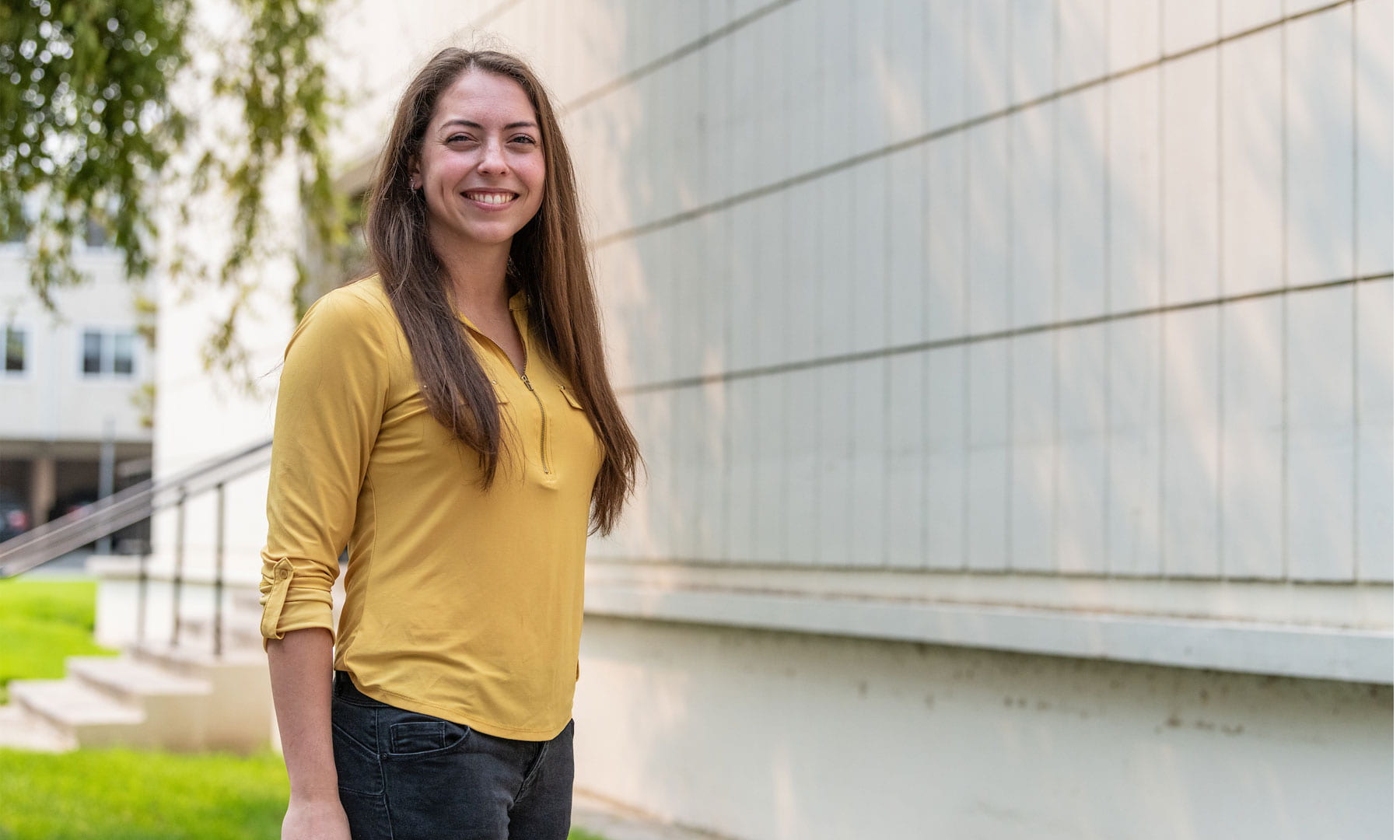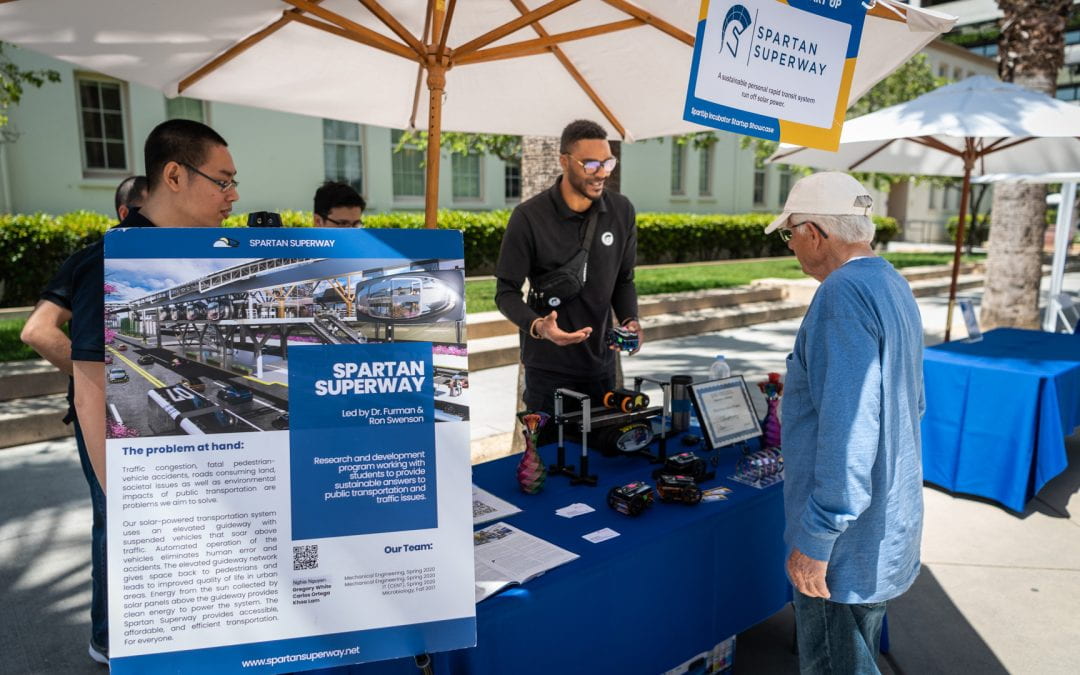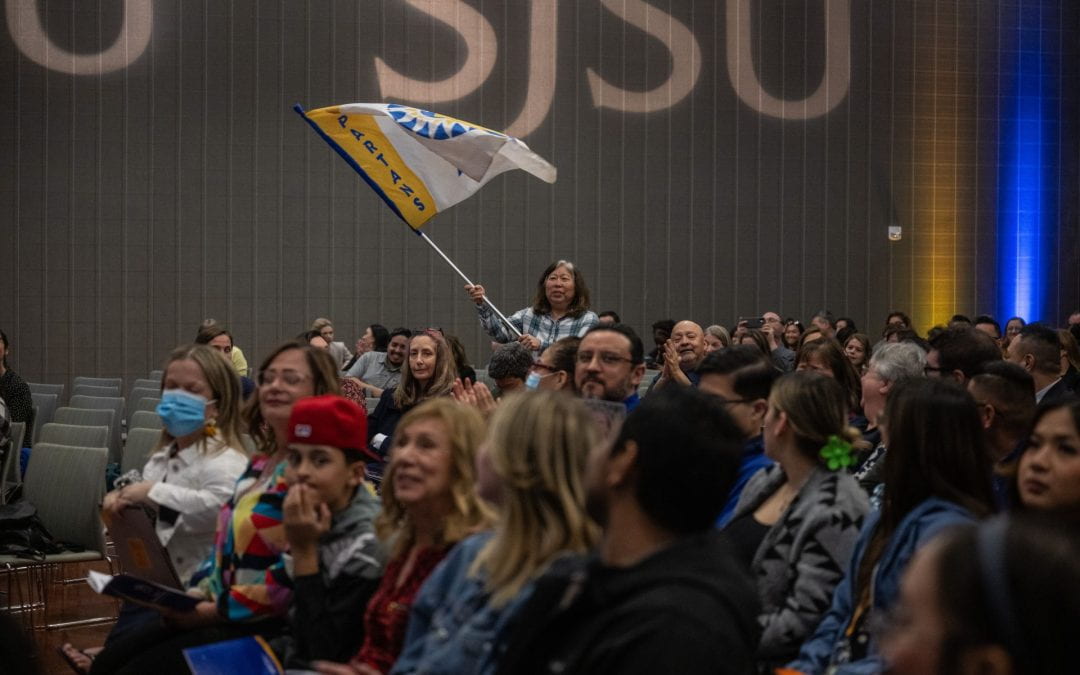Amanda Stasiewicz Receives $1.4 Million NOAA Grant to Study Evacuation Order Effectiveness

SJSU Assistant Professor of Environmental Studies Amanda Stasiewicz will use her $1.4 million grant to study evacuation strategies and public messaging effectiveness in communities affected by wildfires. Photo by Robert C. Bain.
Bringing Wildfire Science to the People
In all the terror and chaos of California’s increasingly extreme wildfires, some details and areas of research can be overlooked. Authorities and policymakers often reach out first to wildfire scientists — engineers, ecologists, meteorologists — to help come up with solutions.
It’s a natural direction to take, of course, but one that can also leave some people out: the social scientists. And that’s what Amanda Stasiewicz, armed with her new $1.4 million grant to study “Differential community needs and uses of fire weather and smoke information,” hopes to change.
Stasiewicz, assistant professor of environmental sciences, joined San José State in 2020 as part of the cluster hire for the Wildfire Interdisciplinary Research Center (WIRC). She describes herself as “the person who is bringing this all back to the people.” Her research on this project focuses specifically on the social science behind evacuation orders and fire and smoke information that’s disseminated to the public: how effective it is, how it can be adjusted to deal with ever more extreme fires and, most importantly, how to improve it.
In the United States evacuation strategies and warnings are often simple and direct: get out when we tell you to get out, as Stasiewicz explains. But many in the US show interest in other options like stay and defend, which allows property owners to prepare and stay where they are in the event of emergencies.
“Alternatives to evacuation can make a community more resilient,” Stasiewicz says. “If your roads are backed up, can we have temporary refuge areas? Is there a community center that’s fire-hardened that people can go into and shelter in to help them survive a fire event that blows over? There are a lot of communities starting to look at this space.”
A Project with Many Phases
The new grant, facilitated by the National Oceanic and Atmospheric Administration (NOAA) and the Department of Commerce, will allow her to work directly with community members to determine the best path forward. First, she will go into various communities that have experienced wildfires and conduct case studies, drawing on in-depth interviews with community members as well as the individuals involved in disseminating information or communicating with the public during the fires.
She plans to use this information to map out the social networks that were “engaged and operating” during previous events. Finally, she hopes to go door-to-door in these communities with surveys about evacuation decision-making under different scenarios. When she brings results back to the modelers at NOAA and the National Weather Service, they can begin to look at, and potentially implement, different hazard evacuation models.
Stasiewicz and Her “Small Army”
Stasiewicz will work directly on this project with her “small army of students.” “It’ll be a really great project for getting students engaged in community-facing spaces,” she says. “It doesn’t just give them an idea of some of the models and communication strategies they might use if they went into emergency management, but also some of those softer skills, how to talk to different people and engage professionally.” She adds that this work can mean “lots of hard days in the field,” but clearly her students are as enthusiastic as she is.
Christian Tensuan, ‘22 Environmental Studies, will be traveling with Stasiewicz this summer to work on the grant before beginning a master’s program at the University of Oregon. He says he’s “incredibly excited to be a part of this grant and have the opportunity to continue working alongside Amanda. This grant and research have allowed me to pursue higher education at a top university outside of the Bay Area,” he explains. “I’ll be the first in my family to have taken such a move.”
Giving People a Voice
Above all, Stasiewicz is deeply grateful for the people who participate in her work: “The ability to do this research and the things we know would not be possible unless communities were open to working with us and individuals shared their time with us,” she says. “What we hear and what we campaign for is [based on what] I hear on the ground in the backcountry, in rural areas, in the urban fringe, places where people sometimes don’t feel like they have a power or a voice.”
“What I’d like them to know is that my students and I immensely appreciate their efforts and their energy. We hope that by collecting these stories, we will be able to foster positive change.”




